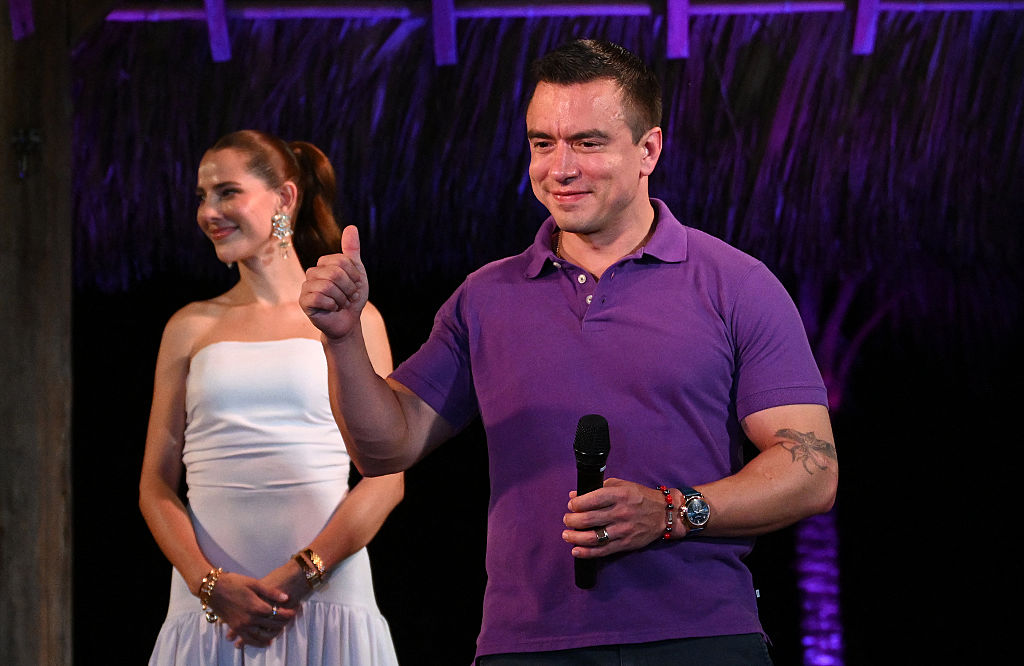Capriles vs Chávez Online: Venezuela’s Social Media Split
Capriles vs Chávez Online: Venezuela’s Social Media Split
The Venezuelan president relies on Twitter while his rival favors Facebook, making social media yet another battleground in the Venezuelan presidential race.
In the lead up to Venezuela’s October 7 presidential election, much of the campaign is being waged via social media. Yet, while the challenger Henrique Capriles primarily uses Facebook to promote his message, President Hugo Chávez focuses efforts on Twitter. Why the technological divide?
Roughly 10 percent of Venezuelans use Twitter while 33 percent have a Facebook account, estimates online analytics firm Tendencias Digitales. The use of social media in Venezuela will likely continue to increase. As a recent report by digital researcher comScore found, Venezuela had the greatest growth in Internet users worldwide between April 2011 and April 2012. Online influence of Venezuelan voters could help tip the election; recent polls show varying differences between the political rivals, with a Consultores 21 poll from late July placing Chávez just 4 points ahead of Capriles. If the race could be won in terms of social media supporters, the president’s 3 million Twitter followers would beat his rival’s 1 million, but Capriles has almost twice the number of Facebook fans as Chávez.
Capriles uses his Facebook heft to communicate directly with voters; he held a July 26 forum intended to offer an alternative to the daily broadcast of Chávez’s speeches over public radio and television stations. Moreover, he recently used Facebook as a means to drum up support in the face of a dispute over an electoral regulation. Venezuela’s election council threatened sanctions against Capriles earlier this month, saying that his baseball cap emblazoned with the three colors of the Venezuelan flag was in violation of the campaign laws against candidates using national symbols. Capriles denied that he was breaking the rules and continued to wear the hat, turning to Facebook to protest. Through an August 6 Facebook campaign entitled “tus fotos con la gorra tricolor” (“your photos with the tricolor cap”), Capriles encouraged supporters to email in photos of themselves in the same tri-colored caps; the album led to hundreds of photo uploads and garnered thousands of likes and shares.
Chávez joined Twitter in 2010, tweeting via the username @chavezcandanga, in an effort to counter the opposition’s control of social media. The president says that he must rely on Twitter to spread his message as his health leaves him unable to travel as much as his opponent. Earlier this year, Chávez had maintained contact with supporters over Twitter when radiation therapy had kept him out of the private eye. Twitter might just be the right platform for swaying the Venezuelan voter. “Facebook has much more penetration,” said Ángel Méndez, professor of digital marketing at Universidad Católica. However, Andrés Bello of El Universal wrote: “Twitter, however…is more likely to spread news and politics to the Venezuelan population.”
Venezuela isn’t the only country in Latin America to see social media play an increasingly prominent role in elections. Candidates in the July 2012 Mexican election made heavy use of Facebook, Twitter, and YouTube to connect with voters. However, the #YoSoy132 student demonstrations, which employed social media to help organize protests against the election’s victor Enrique Peña Nieto, demonstrated how online tools can be used against political candidates as well.
Learn more:
- Read a piece on the use of Twitter in the 2010 Venezuelan elections.
- Read a report by the U.S. Senate Foreign Relations Committee about the use of social media by Latin American governments.
- Read a Wall Street Journal piece about Chávez’s use of Twitter.
- Visit AS/COA Online’s guide to the 2012 Mexican election to explore how candidates made use of social media.
- Find Chávez on Facebook and Twitter.
- Find Capriles on Facebook and Twitter.








